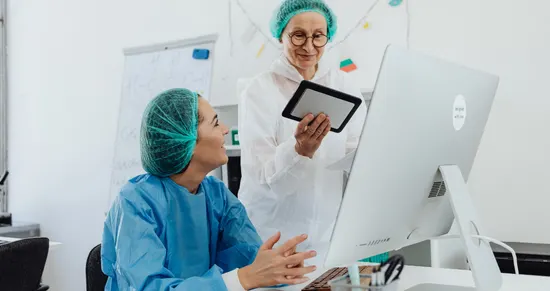In India if a medical device is Manufactured, Imported and sold in the market then it must be approved by the Central Drugs Standard Organisation (CDSCO). The CDSCO is a regulatory body which comes under the Directorate General of Health Services in the Ministry of Health and Family welfare, Government of India.The CDSCO has laid certain guidelines for manufacturing medical devices in India. The manufacturer has to comply with these guidelines to manufacture medical devices in India. The CDSCO classifies the devices into four classes on the basis of Potential risk associated with them. These classes are:
- Class A – Low Risk
- Class B – Moderate Risk
- Class C – Moderate High Risk
- Class D- High Risk
For a manufacturer to obtain a manufacturing license, he has to first classify his device based on the guidelines of CDSCO. After determining the risk class, he has to apply to the CDSCO Sugam portal. After the application on the Sugam portal, CDSCO will either approve or disapprove the application. CDSCO can also raise certain queries or ask for some more information from the manufacturer. There are certain forms for Class A and Class B notified medical devices. These are as follows:
- MD 3 – Application form for Manufacturer
- MD 4 – Application form for Loan License
- MD 5 – Grant License to Manufacturer
- MD 6 – Grant of Loan License
- MD 12 – Application for a test license
- MD 13 – Grant of Test License
Now, let’s see the type of licenses a manufacturer can apply for.
Manufacturing Loan License
In the case of a manufacturing loan license, you use the premises of another manufacturer who must possess the license for the same product for manufacturing. He must have all the regulatory approvals for the same. If the entity’s licenses do not meet the requirements set forth by medical device rules, it also has the authority to suspend them. The device master file must be prepared and all the relevant documents pertaining to the product need to be provided by you and the manufacturer’s details are also required.
Manufacturing License
For the Manufacturing license, you must get approval from CDSCO for your manufacturing facility and apply for the license. You would be required to share the details of your manufacturing facilities and they must comply with the infrastructure requirements specified by CDSCO. The site master file needs to be prepared as per schedule IV of MDR 2017. The test reports of the products are also required in this case.
Wholesale License
If you apply for a wholesale license no documents are required to be prepared at your end. You can market and sell these products once you receive this license. Here the details of the original manufacturer are required. To sell any medical device in India it is mandatory to have a wholesale license.
Key Authorities Overseeing Medical Device Licensing
Key authorities overseeing medical device licensing include the U.S. Food and Drug Administration (FDA), which regulates devices under the Federal Food, Drug, and Cosmetic Act. In the European Union, Notified Bodies assess conformity under the Medical Device Regulation (MDR 2017/745). In Canada, the Health Canada Medical Devices Bureau handles licensing. Japan is overseen by the Pharmaceuticals and Medical Devices Agency (PMDA) and the Ministry of Health, Labour and Welfare (MHLW). China’s regulatory body is the National Medical Products Administration (NMPA). Each authority ensures devices meet safety, quality, and performance standards before market approval.
Medical Device Classification According to Risk Factor
Medical devices are classified based on the level of risk they pose to patients and users. Most regulatory systems, including the FDA, EU MDR, and WHO, follow a risk-based classification. Devices are generally divided into Class I (low risk), Class II (moderate risk), and Class III (high risk). The EU MDR includes Class I, IIa, IIb, and III, with increasing regulatory control. Classification depends on factors like invasiveness, duration of use, and whether the device is active or implantable. Higher-risk classes require more rigorous clinical evidence, quality controls, and regulatory oversight before being approved for market use.
Eligibility Criteria for CDSCO Manufacturing License
To obtain a manufacturing license from the Central Drugs Standard Control Organization (CDSCO) in India, applicants must meet specific eligibility criteria. The manufacturer must have a valid company registration, a dedicated manufacturing facility that complies with Good Manufacturing Practices (GMP), and qualified technical staff including a competent production and quality control team. The facility must be equipped with necessary infrastructure, equipment, and environmental controls. Applicants must submit detailed documentation, including the Device Master File (DMF) and Plant Master File (PMF). For certain classes of devices, prior approval from the State Licensing Authority or CDSCO may be required.
Documents Required for CDSCO Manufacturing License
To obtain a manufacturing license from the Central Drugs Standard Control Organization (CDSCO) in India, applicants must submit a comprehensive set of documents as per the Medical Devices Rules, 2017. The specific requirements vary based on the class of the medical device and the type of application (e.g., fresh, additional, or retention).
Key Documents Required for CDSCO Manufacturing License:
- Covering Letter: A formal letter specifying the intent of the application.
- Application Form: Form MD-7 for fresh applications or Form MD-8 for loan licenses.
- Fee Challan: Proof of payment of the prescribed fee.
- Firm Constitution Details: Documents detailing the constitution of the firm (e.g., partnership deed, memorandum of association).
- Site Ownership/Tenancy Agreement: Proof of ownership or tenancy of the manufacturing site.
- Plant Master File (PMF): Comprehensive information about the manufacturing facility, including layout, equipment, personnel, and quality control measures.
- Quality Management System (QMS) Documents: Quality manual, procedures, and records demonstrating compliance with QMS requirements.
- Device Master File (DMF): Detailed information about the medical device, including design, specifications, labeling, risk analysis, and clinical evidence.
- Test License (if applicable): Form MD-13 for devices requiring clinical investigation.
- Permission in Form MD-27: For devices without a predicate device.
These documents ensure that the manufacturing facility and the medical devices comply with the safety, quality, and performance standards set by CDSCO. For detailed checklists and guidelines, applicants should refer to the official CDSCO website or consult the specific forms and schedules mentioned in the Medical Devices Rules, 2017.
Step-by-Step Application Process for CDSCO Manufacturing License
- Classify the Medical Device as per the Medical Devices Rules, 2017.
- Register on the CDSCO SUGAM Portal to initiate the application process.
- Fill Form MD-7 (for fresh license) or MD-8 (for loan license).
- Prepare required documents like Device Master File (DMF), Plant Master File (PMF), site ownership proof, and QMS records.
- Pay the prescribed fee and upload the challan.
- Submit the application online through the SUGAM portal.
- Undergo facility inspection by CDSCO/State Licensing Authority.
- Receive license approval in Form MD-9 or MD-10.
Government Fee for CDSCO Manufacturing License
The fees for a CDSCO manufacturing license in India depend on the class of medical device and the number of manufacturing sites:
- Class A and B medical devices – The fee is 5,000 INR for one manufacturing site and 500 INR for each medical device.
- Class C and D medical devices – The fee is 50,000 INR for one manufacturing site and 1,000 INR for each medical device.
The CDSCO also charges a license retention fee to maintain the validity of the license:
- Class A and B medical devices: The fee is 500 INR per medical device.
- Class C and D medical devices: The fee is 1,000 INR per medical device.
The CDSCO also has a user registration process. The authorized signatory or responsible person of the organization must fill out the registration form. After submitting the form, the CDSCO administrator will either approve or reject the request.
Validity Period of CDSCO Manufacturing License
The CDSCO Manufacturing License, once granted, remains valid for five years from the date of issue, provided the license retention fee is paid before the expiry of the fourth year. If the retention fee is not paid on time, the license is considered cancelled or expired. Manufacturers must also ensure continued compliance with the conditions of the license, including adherence to Good Manufacturing Practices (GMP), quality system requirements, and timely reporting of any changes or adverse events. Renewal or retention of the license is processed through the CDSCO SUGAM portal, requiring updated documentation and payment of applicable fees.
Challenges Faced During the CDSCO License Application Process
Applicants often face several challenges during the CDSCO license application process. Common issues include complex regulatory requirements, especially understanding device classification under the Medical Devices Rules, 2017. Incomplete documentation or errors in forms like MD-7 or MD-8 can delay approval. Navigating the SUGAM portal may be difficult due to technical glitches or unfamiliarity. Inadequate quality management systems (QMS) or non-compliance with Good Manufacturing Practices (GMP) often lead to rejection during site inspections. Coordination between State Licensing Authorities and CDSCO can also cause delays. Additionally, evolving regulations and lack of expert guidance can make the process time-consuming and resource-intensive.
Common Mistakes to Avoid During the CDSCO License Application Process
During the CDSCO license application process, several common mistakes can lead to delays or rejections. One major error is incorrect classification of the medical device, which affects the entire application route. Submitting incomplete or inaccurate documentation, such as the Device Master File (DMF) or Plant Master File (PMF), is another frequent issue. Applicants often overlook fee payment confirmation or upload invalid proof. Neglecting site readiness for inspection and poor implementation of Quality Management Systems (QMS) can result in non-compliance. Errors in forms (MD-7/MD-8) and failure to track application status on the SUGAM portal also hinder the approval process.







